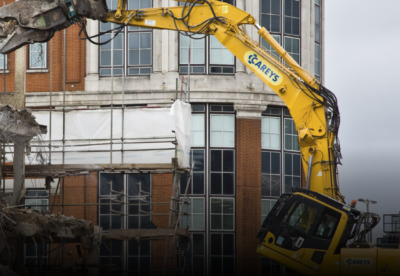The CLC has submitted evidence to the government’s Migration Advisory Committee (MAC) detailing roles it believes should be on the shortage occupation list to make it easier for contractors to employ migrant workers under the points based immigration system.
The occupations recommended for inclusion on the list are:
• Bricklayers and Masons
• Carpenters and Joiners
• General Labourers
• Ground Workers
• Piling Rig Operatives
• Plant Operatives
• Plasterers, Dry Liners and Ceiling Fixers
• Retrofit Co-ordinators
• Road Construction Operatives
• Roofers, Roof Tilers and Slaters
• Scaffolders, Stagers and Riggers
• Steel Erectors
• Thermal Insulators
The CLC also recommended that Building Safety Managers be included in the Skilled Worker route.
Co-Chair of the CLC and Group Chairman and CEO of MACE, Mark Reynolds said: “The CLC is committed to building our domestic construction workforce and championing construction as one of the best career choices for new entrants but the fact is we are still currently facing chronic shortages.
“A dynamic immigration system allows us to bridge gaps in workforce need and meet the people requirement for the sector’s pipeline of work. That’s why we are calling for the inclusion of these occupations in the shortage occupation list, to help make it a little easier to access the right people, at the right time’.
James M. Butcher, Director of Policy at the National Federation of Builders, and the report’s lead author added: “Construction faces a vacancy rate higher than the all-industry average, so it is fair to say we are in a worse position than many other industries.
“The occupations we have recommended are based on a solid evidential base for the sector’s need over the next five years.
“If we are successful in getting these occupations listed, we’ll work hard to ensure construction companies know what they need to do to engage with the immigration system, which is why we are also launching new CLC guidance on how to do that.”
But some industry labour experts have questioned the CLC’s move.
Ian Anfield, managing director of construction payroll company Hudson Contract said: “Amongst all the predictions of the labour market falling off at the end of the Brexit Transition Period on 31 December 2020, we predicted a slow withering on the vine as construction operatives already here with settled and pre-settled status gradually left or retired and the flow of new people dried up. We are now seeing that problem come to fruition.
“Unfortunately, I fear the government intervention that the CLC have requested will do little to solve the problem. Skilled EU construction operatives command rates far higher than the Skilled Worker Visa rate of £25,600 already, the self-employed ones we contract pay an average £1,000/week similar to UK operatives. Therefore dropping the rate will not help.
“The simple fact is that if you advertised for skilled bricklayers, joiners and plasterers in Poland to come to the UK for £25,000/year PAYE, you wouldn’t get many takers, at £20,000 you would get even less.
“And regardless of how unattractive the offer may be for workers, UK specialist contractors who are run from small offices or even the kitchen table simply do not have the resource or security of workload to go through the bureaucracy of becoming sponsors, recruiting abroad and monitoring new foreign employees to make sure they comply with their visas.
“Our clients tell us that what they want is access to the highly skilled self-employed EU workforce that they had before. We would urge the government to use CIS as the tool to open that labour market back up for them.
“Despite what some believe, CIS is not compatible with the current points based system, its PAYE with all its cost and complexity or nothing. A new higher CIS deduction rate could be applied to oversees workers to ensure compliance with visas. Temporary skilled workers could be overtaxed with returns paid when they leave.”
The Migration Advisory Committee is expected to report on construction shortages imminently.

.gif)




































.gif)














